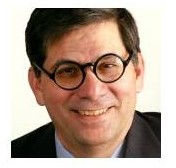Remember health care reform? Law, funding remain on separate and unequal tracks
By Mark Trahant
Mark Trahant is a writer, speaker and Twitter poet. He is a member of the Shoshone-Bannock Tribes and lives in Fort Hall, Idaho. Trahant’s recent book, “The Last Great Battle of the Indian Wars,” is the story of Sen. Henry Jackson and Forrest Gerard, now available at www.lastgreatbattle.com Follow him on Twitter @trahantreports and daily “news” poems @newsrimes4lines
While Republicans pretend they can instantly repeal the complicated law, the actual implementation continues to moves forward. Sort of.
One provision that is not going to happen is the long-term care program known as CLASS (Community Living Assistance Services and Supports). This program was the brainchild of the late Sen. Edward M. Kennedy, D-Mass.
Health and Human Services Secretary Kathleen Sebelius announced on October 14 that she did not see a “viable path forward” for CLASS. “… the law passed by Congress required me to design a plan that would be actuarially sound and financially solvent for at least 75 years,” Sebelius said. “The provision protected both taxpayers and beneficiaries. After all, if CLASS failed, no one would be hurt more than those who would pay into it and would be counting on it the most.”
The problem is, of course, demographic. The baby boom generation is huge, much larger than the generation of workers and taxpayers that must pay for such a program.
But, as Sebelius pointed out in her news release, the problem is not going away. “By 2020,” she said, “we know that an estimated 15 million Americans will need some kind of long-term care and fewer than three percent have a long-term care policy.”
Long-term care is a complicated issue for Indian Country. There are only a little more than a dozen nursing homes serving American Indians or Alaska Natives. There are also several initiatives promoting care for tribal members either in their homes or in facilities. Unlike the CLASS program, many argue that because of Medicaid funding, there is a “business model” for long-term care in Indian Country. Medicaid is an entitlement program, so if people are eligible, the money is there. At least for now.
The other big “sort of” for health care reform is money. Most of the Indian health system does not have an adequate funding stream. Even with the enactment of the Affordable Care Act, the system remains seriously underfunded. The current congressional budgeting process through a Continuing Resolution (a short-term spending bill) only makes that problem worse.
One measure of that problem is the money appropriated for Contract Health Services. Nearly anyone who’s ever used the Indian Health Service (or a contracted, tribal program) understands the shortage of money for contract services (those outside of IHS).
A study last month by the U.S. General Accountability Office put this in perspective: “Sixty of the 66 federal and 73 of the 103 tribal CHS programs that responded to GAO’s survey reported that in fiscal year 2009 they did not have CHS funds available to pay for all services for which patients otherwise met requirements.”
Moreover 11 of 60 CHS programs reported running out of money before the end of fiscal year (the source of the “don’t get sick after June” narrative).
Some health facilities told the GAO that they found a way to pay after the money ran out. “For example,” the GAO said, “some federal CHS programs reported helping patients locate free or low-cost health care. Tribal CHS programs reported using a variety of strategies not available to federal CHS programs. For example, 46 of 103 tribal CHS programs that responded to GAO’s survey reported supplementing their CHS programs’ funding with tribal funds, which are earned from tribal businesses or enterprises.”
So what does GAO think IHS should do about this? Get better data to more accurately reflect the needs of Indian people. I can’t argue with that, but the government investigators also ought to tell Congress to do its damn job and appropriate enough money.
But there is a bigger issue here. Namely: What is the business model for the Indian Health Service and the Indian health system?
The IHS is a federal agency that directly operates clinics and hospitals; the Indian health system is broader, using money from IHS (and other sources) to fund tribal and other health providers. In some ways that means IHS, the funder, almost has to act like an insurance company instead acting like a government agency.
It’s that diffusion of mission — IHS as funder, operator and insurance company — that makes it far more complicated to be clear about the meaning of health care reform to American Indians and Alaska Natives. Especially when the health care reform law and the funding for the Indian health system remain on separate (and unequal) tracks.
RSS feed for comments on this post. TrackBack URI
